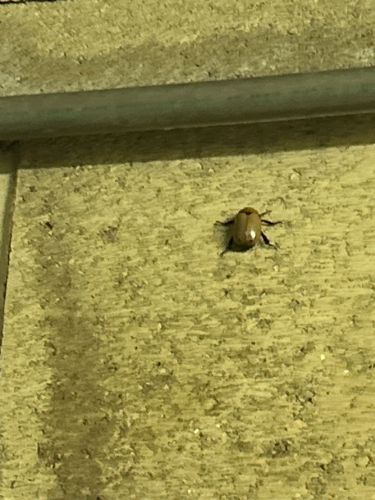Scarab Beetle (likely Flower Chafer)
Scientific Name: Difficult to determine exact scientific name from image alone, but likely within Cetoniinae (e.g., Cotinis spp. or similar genera).
Order & Family: Order: Coleoptera, Family: Scarabaeidae (likely subfamily Cetoniinae)
Size: Scarab beetles vary greatly in size, from a few millimeters to several centimeters. The visible beetle appears to be in the range of 1-3 cm based on the visual context.

Natural Habitat
Scarab beetles are found in a wide variety of habitats globally, including forests, grasslands, deserts, agricultural areas, and urban gardens. Flower chafers are typically found near flowering plants, fruit trees, or decaying wood.
Diet & Feeding
The diet of scarab beetles varies. Many are herbivorous, feeding on plant roots, decaying wood, or foliage. Flower chafers (which this beetle strongly resembles) primarily feed on pollen, nectar, sap, fruit, or decaying organic matter. Larvae often feed on decaying wood or plant roots.
Behavior Patterns
Many scarab beetles, especially those in the subfamily Cetoniinae (flower chafers), are active during the day and are attracted to fermenting sap or ripe fruit. They are generally good fliers and can be observed around flowering plants during the warmer months.
Risks & Benefits
Generally, scarab beetles are not harmful to humans. Some species can be considered agricultural pests if their larvae feed extensively on crop roots (e.g., May beetle larvae or 'grubs'). However, many species contribute to decomposition by breaking down organic matter or play a role in pollination by visiting flowers. This particular beetle, if it is a flower chafer, is likely harmless and may even assist in pollination.
Identified on: 7/4/2025